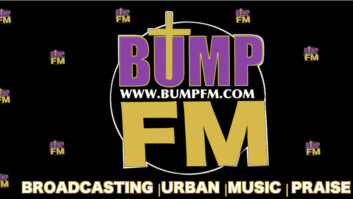There’s an interesting push-pull at play over a potential new low-power FM in Los Angeles. We’ve reported the commission has been issuing lists of applicants competing for the same potential frequency allocations and triggering petition to deny periods.
In the City of Angels, 21 applicant groups are vying for an LPFM license on 101.5 MHz. Applicants in California, as well as 10 other states have until Oct. 8 to file settlement agreements, according to a database compiled by REC Networks.
On 101.5 MHz, the Glendale Humane Society and Long Beach Community Television and Media Corp. filed a petition to denyagainst six applicants, including Future Roots, which runs community supported Internet radio station dublab, Craft and Folk Art Museum, Eagle Rock Community Cultural Association, Echo Park Film Center as well as two others that describe themselves as Machine Project, a storefront space and Materials & Applications, an architecture and landscape research nonprofit.
These are six out of 21 applicants the commission has tentatively selected in the Los Angeles MX group (#27) for an LPFM allocation on 101.5 MHz. It’s the largest MX group in the nation. Glendale Humane Society and LBCT, are part of a larger body that call themselves the “Los Angeles 101.5 MegaGroup,” consisting of multiple applicants geographically spread out across Southern California so several stations could be on the air at the same time and time-sharing their programming.
Based on the commonalities of their paperwork, Glendale and LBCT question whether each of the six Westside applicants handled their own engineering or if one person did it all. “We question whether these were the actual individuals who studied their locations, determined the physical coordinates for the proposed tower, calculated the field strength of the second adjacent channel short-spaced stations, determined the size of the interference contour and authored the second-adjacent channel waiver request,” state Glendale and LBCT.
Further, Glendale and LBCT have other issues with the proposed operating sites filed by the six applicants. They say Future Roots has proposed 2 watts from a tower to be located at a residence in the Hollywood Hills. However they question whether, based on location and power, if Future Roots will really be able to “provide an acceptable and usable signal within the station’s predicted 60 dBu F(50, 50) service contour.” The proposed Craft and Folk Art Museum site is less than 24 kilometers (app. 15 miles) from the chosen sites of nine other MX applications and they question whether the proposed tower site the Materials & Applications group has chosen will really work.
Finally, Glendale and LBCT claim Eagle Rock didn’t actually apply for an LPFM, gave an incorrect tower height in its application which included incorrect siting information.
Out of the six applications, the Future Roots paperwork was the best prepared, and it has the most to gain from acquiring an LPFM because it has an established Internet station, concludes Glendale and LBCT, which add they believe Future Roots is also the only site “most likely to get some form of true site assurance.”
It is important to note that in Southern California, 101.5 receives co-channel interference from KGB(FM) in San Diego, especially during episodes of tropospheric ducting, according to Glendale and LBCT. Because of the 30 m HAAT limit of LPFM, stations in the hills such as the location of Future Roots and some other Westside 6 applicants are limited to 2 watts and they will likely experience substantial interference where in comparison, LPFM stations at ground level will be able to operate at or near the full 100 watts and are better equipped to overcome the interference from KGB, according to Glendale and LBCT in their petition. They add that many of the 101.5 applicants are outside the 34 dBu interfering contour of KGB but will still experience interference.
In contrast, Glendale and LBCT say, their proposal is a better use of spectrum for the allocation “than a single station operating in Hollywood” if Future Roots wins the allocation.
Future Roots, on behalf of itself and the other five applicants named in the petition, has asked the commission for more time to respond, saying it’s proving to be “more logistically difficult” than had been anticipated to pull together responses from all six applicants. They note the responses are needed to compile a complete record and the public interest will be served by “a thorough vetting of the issues” presented in the petition.
Future Roots and the other five applicants asked for an extension until Sept. 26, according to their filing in the agency’s database.










